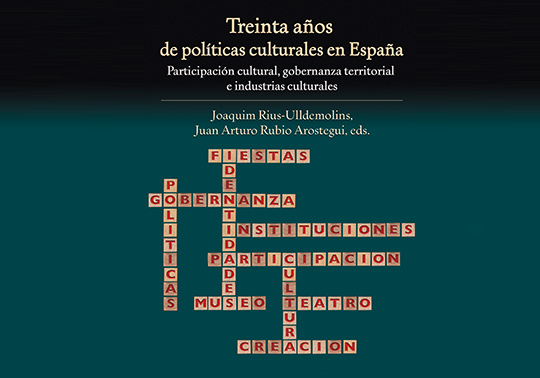Esteban Morcillo and Ximo Puig present tomorrow a book about thirty years of cultural policies in Spain
- April 12nd, 2016

The principal Esteban Morcillo and the president Ximo Puig present on Tuesday at the Cultural Centre La Nau the book: ‘Treinta años de políticas culturales en España. Participación cultural, gobernanza territorial e industrias culturales’ (PUV). (‘Thirty years of cultural policies in Spain. Cultural participation, territorial governance and cultural industries’). The event will take place at 19:30 at the Aula Magna. It will be possible to watch it broadcast live via the Cultural Chanel of MediaUni, here .
The book is co-edited by the professors Joaquim Rius-Ulldemolins, from the Universitat de València and Juan Arturo Rubio Arostegui, from the Antonio de Nebrija University. During the presentation of the book, both of the co-editors will participate.
This book takes stock of the overall situation of more than thirty years of cultural policies in Spain. As it is explained in its introduction, this work’s aim is to ‘make a pioneer contribution because of its time range (the last thirty years) and its geographical range (the whole Spanish State) to fill a gap that existed in this area, without being exhaustive’. To make a study of this magnitud, specialists of every area or dimension of cultural policies have been consulted. Throughout more than 400 pages that form the book it is analysed the political and institutional framework and it deals with the variety of actors, the different areas involved and the identitary factors.
Following Joaquim Rius-Ulldemolins, over the last 30 years there are many positive aspects, since ‘it have been estabished the cultural and democatric policies, and they have been spread out to every level of the administration: central, regional and local; policies that have been particullary lead by these last ones, that have promoted culture as an element of social cohesion and external projection’.
Nowadays, he is a little bit more sceptical: ‘The architecture that was design in the 80s is over and we should look for different cultural policies for a reality in which two crisis have met, one general of the model of economic development in Spain with serious cuts in culture, and another one more of the cultural area caused mainly by the change of the production and cultural consumption patterns due to the digital model. The meeting of these two crisis, he concludes, is a ‘perfect storm’ that forces to make a careful evaluation of the last thirty years: with lights and shadows.
The book is divided into four areas in which the authors of renowned prestige and from different disciplines (sociology, poltical science, economics, law, communication sciences) analyse the actors in cultural policies, the promotion of cultural dissemination, the festivity culutre, the policies in relation to cultural events and creative cities, education, media and other emerging topics.
File in: Rectorat , Llibres i revistes , Centre cultural La Nau
















